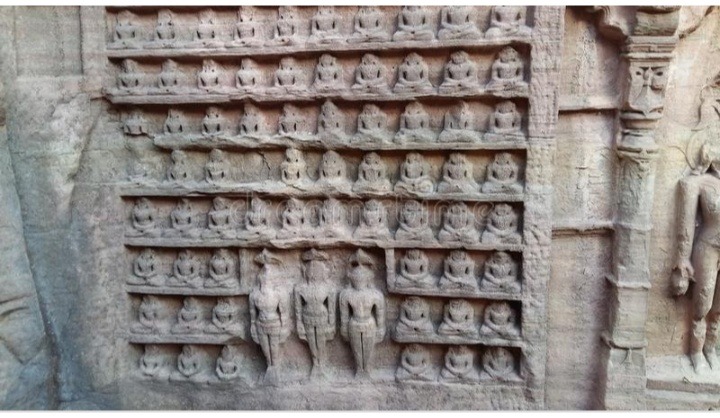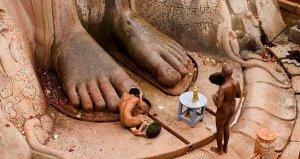Digambara Jains are one of the schools of Jainism. The word has been derived from Sanskrit words ‘Dig’ which means direction and ‘ambara’ means a dress. Thus, ‘Digambara’ is used in reference to those whose garments are of the elements that fill the four quarters of space.
Digambara Jains
Digambar tradition’s insight can be seen from the relics found in Harrapan excavation such as seals depicting kayotsarga posture, idols in padmasana and a nude bust of red limestone.
The ancient inscriptions of Digambar Jains can be seen from the presence of Gymnosophists in Greeks which records as early as the 4th century B.C, that claims the presence of the ancient saramana practice.
The head of all monastics is called Acharya, while the saintly preceptor of saints is called upadhayay. The female monastics are known as Aryikas. Astoundingly, there are more nuns than monks among Digambara Jains.
A Digambara Jain monk has 28 Mila gunas (primary attributes). They include five mahavratas( supreme values), five Samitis (regulations), five Pancendriya nirodha ( control of duties), six Sadavasyaka( essential duties) and seven niyamas (rules and regulations).
Acharyas have 36 Mulanguna in addition to 28 mila guna. One of the most important monks of Digambara Jain tradition was Kundakunda who authored Prakrit texts such as the samayasara and pravacanasara.

The monks do not wear clothes as it is considered as parigraha (possession), which leads to attachment. They carry ‘picchi’, a broom made of peacock feathers which are used to clean the area where they sit or walk. Along with picchi, they carry kamandalu, a water container and snastra, a scripture.
Dundas shows archaeological evidence which indicates the transformation in the practice of Digambara monks from complete nudity towards wearing clothes. Ancient Tirthankar( omniscient beings) statues found in Mathura are naked, the oldest one wearing clothes is dated in the 15th century C.E.
The Digambara Jains worship completely naked idols of Tirthankar and Siddha (liberated soul). Digambara community is divided into two sects Mula Sangha (original community) and modern community. Mula sangha is further divided into Orthodox and heterodox.
Digambara Jains rejects the authority of the text accepted by another sect, the Svetambara. According to Digambaras after attaining ‘kevala jnana’ (omniscience) Arihants (omniscience beings) are free from human needs such as hunger, thirst and sleep while Svetambara has an adverse belief.
Digambara Jains believe only male can attain moksha (liberation) from complete nudity, while Svetambaras believe that females can also attain moksha without renunciation of clothes.





